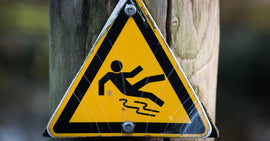New year's resolution. What an interesting phenomenon. Every year we feel like January 1st is that magical day when we will finally be ready to make a behavioural change in our lives. Our motivation is at an all-time high, and we commit to eating better, exercising more, meditating regularly, saving more money... yet after a few weeks, we usually fall back into our old habits. Why is behaviour change so hard? Lack of willpower and discipline? Laziness? The answer is much more interesting.
One of the reasons why changing behaviour is so hard is that we are, by nature, irrational, influenced by hundreds of cognitive biases. Think of cognitive biases as mental shortcuts. According to Hallsworth & Kirkman (2020), "much of our behaviour is non-conscious, habitual, and driven by cues in our environment or the way in which choices are presented." A modern-day example of this would be something like this: "Hey, look at this box of tasty looking muffins in my kitchen, I need calories to survive, so I will go ahead and consume a few." Now, if the person keeps having muffins around and repeats this behaviour often enough, it will eventually become a habit, "a routine of behaviour that is repeated regularly and often subconsciously."
Also, our physical and digital environments significantly impact our decision-making. For example, if you have junk food in a visible spot in the house, you are much more likely to consume it. We can extend that logic to all the food-delivery apps on our phones, making access to fast-food extremely convenient.
Lastly, we are expected to utilize new information as the main ingredient for successful behaviour change, but many studies have shown that that approach simply does not work.
So what can we do to achieve long-term behaviour change? Here are a few recommendations based on the newest insights in behaviour science. We will look at an example of someone who wants to exercise more.
How to Set a Long-Term Goal
Set a long-term goal that's lined up with your identity and values and label it as so. For example, if you want to make physical activity a part of your everyday life, instead of saying "I want to exercise more", imagine and label yourself as someone who is a regular exerciser who likes to be active with their kids.
Reach your Goals by Making it Public
Make the whole experience social. We are more likely to enjoy and stick to new habits if we engage in them with others or share our experience with others.
Make Hitting your Goals Fun
Enjoyment is one of the key ingredients for long-term behaviour change. Find physical activities that bring you joy. For someone, that might be cutting grass and working in the garden, it all counts!
Eliminate Barriers to Reach Your Goals
Make it convenient by eliminating barriers. The easier it is to engage in the new behaviour, the more likely it will become a routine. Getting your exercise clothes ready the night before your morning run will make it much easier to get ready quickly in the morning.
Adjust Your Environment to Reach Your Goals
Modify your physical environment. Make the environment around you more supportive of the habit you are trying to establish. If you find it inconvenient to get to the gym (or there is a pandemic preventing you from doing it), bring the gym to you. Chairs, sofas, benches can be converted into workout equipment safely.
Take Small Steps to Reach Goal
Small steps count. It is more about trending in the direction you want to go to than suddenly implementing a change.
Remember, long-term behaviour change is more about taking small steps every day and implementing systems that will work for you. Experiment, have fun with it and share the experience with your friends and family!
"The first step to go from A to B is not B.
The first step is to go from A, to not A."
-Beau Lotto
Author: Matija Vugrinicek
Myant Product Manager - Health and Wellness
Find similar articles
Goals



